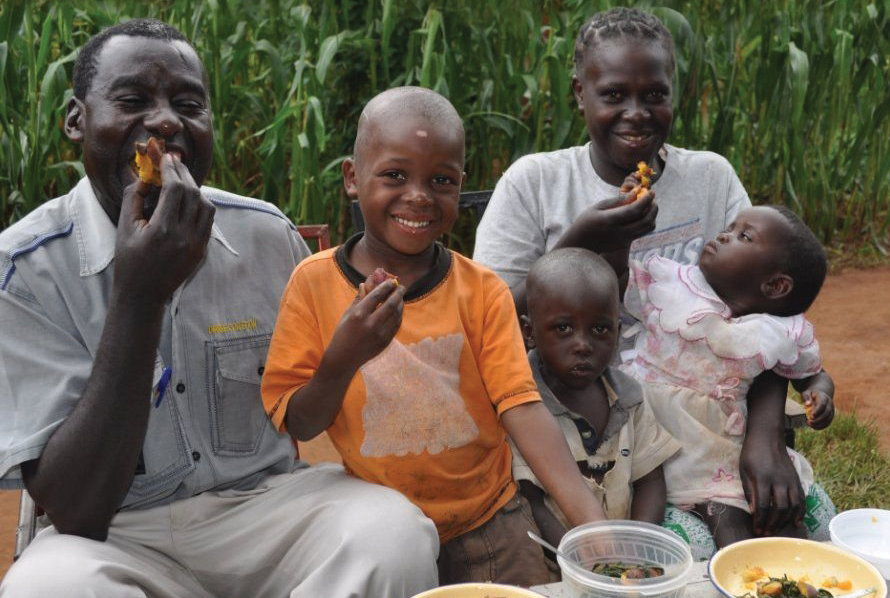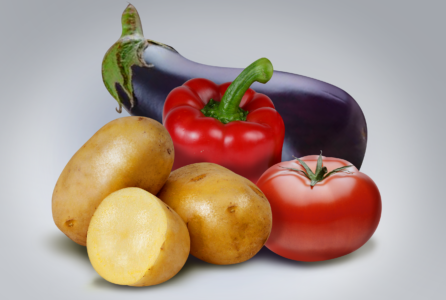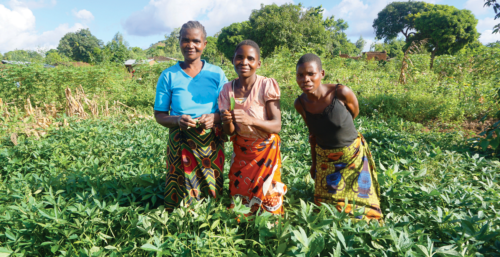
Sweetpotato is a nutritious and resilient crop. This project builds on earlier work by the International Potato Center (CIP) to tackle the bottlenecks in sweetpotato consumption and delivery to release its economic and nutritional potential in rural Africa and improve nutrition. SASHA II focuses on developing breeding approaches and locallyadapted varieties, building sustainable seed systems and improved storage methods, promoting vitamin A rich varieties and their use as purée in processing as well as supporting the growth of a dynamic community of practice in the four technical areas.
KEY ACHIEVEMENTS

An important root crop in Africa, sweetpotato grows well in diverse agro-ecologies, even on degraded soils, and is less labor-intensive than grain production. Orange-fleshed sweetpotato, in particular, can help combat vitamin A deficiencies; one small root meets the daily needs of a young child. It can be very effectively used in nutrition interventions as women, the primary caregivers, are mainly responsible for the crop’s production and consumption.
Although a resilient crop, breeding for increased droughttolerance is becoming urgent due to climate change. And because viruses reduce yields over time, breeding for virus-resistance, coupled with quality seed systems, is the best approach for assuring sustained yields. For maximum benefit, expertise and research need to be widely shared.
Much remains to be done to build solid foundations for wider sweetpotato adoption in Africa, especially training a larger body of researchers and practitioners. This means investing in training materials and information exchange, as well as engaging in advocacy to increase government investment in the crop. A major goal is to change its image from a crop of the poor to a health crop for all.
Objective
Development of capacities, products and methods to reposition sweetpotato in food economies to alleviate poverty and undernutrition in Africa. SASHA is the research foundation for the multi-partner Sweetpotato for Profit and Health Initiative (SPHI), the umbrella for dissemination of improved varieties and diversified use to 10 million households and their diversified use in 16 African countries.
Approach
SASHA phase II focuses on five areas of work:
- New breeding approaches, including accelerated breeding and exploiting hybrid techniques (heterosis) with the aim of producing at least 30 new superior varieties favoring selected traits, such as virus resistance.
- Quality disease-free planting material cost-effectively made available in the required quantities and at the right times to target markets and end-users.
- Tools and methods to reduce seasonality in sweetpotato supply through investment in cost-effective gendersensitive storage techniques and postharvest management practices, assuring minimum safety standards and adequate nutritional quality.
- A gender-sensitive sustainable community of practice involving face-to-face and virtual information exchange for scientists and practitioners under SPHI, and support in areas such as nutritional assessments.
- Monitoring, evaluation, learning and advocacy, raising awareness about the project’s achievements.
Other achievements under SASHA phase II
Breeding
- Using the accelerated breeding scheme developed under SASHA I, released more than 100 improved varieties of sweetpotato since 2009.
- Developed proof-of-concept that hybrid breeding schemes can revolutionize sweetpotato breeding. Genetic gains (increased yields) that took breeders 36 years, can now be achieved in 5 years using improved conventional breeding. Average productivity rates have risen from 10.9 to 18.5 tons/ha under rainfed conditions.
- Established state-of-the-art quality laboratories in Mozambique, Ghana, and Uganda to enable breeding for selected quality traits (beta-carotene, iron, etc.).
- Made significant progress in breeding for high-iron sweetpotato (doubling levels). A feeding trial to confirm absorption rates of increased iron levels is underway.
Seed systems
- Proven capacity to improve the efficiency of disease-free planting material production, with 11 national research systems developing business plans for sustained production of disease-free planting material, known as early generation seed.
- A smallholder appropriate method for assuring planting material in very dry environments, known as triple S. Small healthy roots are stored in layers of cool sand during the dry season, then planted out in nursery beds and watered for six weeks prior to rainy season ensuring sufficient planting material supply when the rains begin.
- Further testing of the net tunnel technology to prevent virus infection, enabling the retention of a disease-free stock of planting material in the field.
Postharvest and nutritional quality
- Establishment of the Food Analysis and Nutrition Evaluation Laboratory (FANEL) in Nairobi assuring safe products and accurate labeling of nutritional content, as well as training more than 20 post-doctoral, PhD and masters students in food safety and nutritional analysis.
- Developed shelf-stable vacuum-packed sweetpotato puree which can be stored at room temperature up to three months using locally available preservatives, stabilizing supplies to the market off-season.
- Increased understanding on the potential and challenges related to the use of solar-powered storage of fresh roots.
Support platforms, knowledge management, and governance
- Development of capacities of national breeders through provision of annual training in improved techniques, as well as management of communities of practice for seed systems and crop management; marketing, processing and utilization; and monitoring learning and evaluation.
- Development and management of interactive data analysis platform and sweetpotato software for breeders and the new digital catalogue for sweetpotato.
- A vibrant www.sweetpotatoknowledge.org portal with more than 120,000 unique visitors since 2011 who downloaded more than 70 documents per month.
Contact
Jan Low
CIP, Kenya
j.low@cgiar.org
Thanks to our donors



